- Home
- Antonia Fraser
The Warrior Queens Page 19
The Warrior Queens Read online
Page 19
1 The metaphors of strife and battle used by commentators on both sides at the time make it difficult (except in the case of Sorbara) to be certain when Matilda actually led her men, as opposed to commanded them.
2 But only the foundations of Countess Matilda’s fortress remain; the ruins above ground date at earliest from the thirteenth century.
3 Matilda was second cousin to Henry IV through her mother Beatrice of Lorraine.
CHAPTER TEN
England’s Domina
On bier lay King Henry
On bier beyond the sea,
And no man might rightly know
Who his heir should be.
PIERS OF LANGTOFT, on the death of Henry I (1135)
In 1114, the year before the death of the gran Contessa Matilda of Tuscany, there took place the May-and-December marriage of an English princess to the German Emperor Henry V. The girl herself, who was variously known as Matilda or Maud (but owing to the plethora of Matildas in this period, will be here generally described as Maud), was a mere twelve years old, having been betrothed and sent to Germany four years before.1 Her bridegroom, nearly twenty years older, was a veteran of many a military campaign and military struggle. He had taken part in the prolonged investiture arguments with the Pope, and had actually enforced the abdication of his father Henry IV, scourge of the Countess Matilda, before his death in 1106.
At the time it hardly seemed likely that the young Empress Maud, or Matilda Augusta, daughter of King Henry I of England, would be called upon to take to the field of battle; but perhaps the unlikely nature of their destiny is one of the few things that all the Warrior Queens outside the antique days have in common. Her married life with the Emperor Henry V was, as it turned out, comparatively brief in a long and eventful life: he died in 1125. Nevertheless Maud’s youth at the moment of her transference from the royal English court of her powerful Norman father to the imperial court of Germany ensured that these were formative years. The Emperor sent away her English attendants – there were to be no Scottish Maries, as would escort the infant Mary Queen of Scots to France – and he had Maud carefully instructed in the German language and customs.
Some of the apparent haughtiness of which, as we shall see, the Empress Maud was to be later accused must have sprung from these early experiences, working upon a naturally strong character. (It is noteworthy indeed how many of the female descendants of William the Conqueror show a vigour and even guts worthy of their great progenitor, starting with his strong-minded and intelligent daughter Adela of Blois.) Here was a girl who was crowned in Germany before she was in her teens and whose official title was ‘Queen of the Romans’. Yet at the time, Maud, having a natural outlet for her energies by contemporary standards for females, in her position as consort to the Emperor, secured nothing but golden opinions. To her German subjects, she was ‘the good Matilda’; a description which would have had an ironic ring to many of those English upon whom she attempted to lay her rule, in the course of her prolonged martial dispute for the crown with her cousin Stephen during that English period known as the Anarchy.
It was the death of Maud’s brother William in 1120, drowned in the tragedy of the White Ship, which brought about the first stage in her transformation. The Empress Maud was now the only surviving legitimate child of Henry I since Henry’s second marriage to Adeliza of Louvain was to be childless (although he was to have more than twenty bastards). The death of Maud’s husband, the Emperor Henry, leaving her also childless and thus without stake in Germany, brought about the second stage. The Empress now returned to the court of her father, and Henry now set about making Maud his heiress with all the considerable energies still at the forceful old King’s command.
Maud had been well fitted to her imperial role, not only by her dignity and her benevolence but also by her beauty, to which all contemporary chroniclers, English and French as well as German, bear witness.2 But as to her new role as heiress to the throne, no one knew what the qualities were which might fit her for that, since there had been no queen regnant in England within historical memory – or at least not indisputably so.
What precedents were there for a female ruler? There were some but Boadicea was not among them. It has been mentioned in the previous chapter that the name of Boadicea had vanished from the written records in England and would not reappear for several hundred years (we cannot of course know about folklore). It is true that Gildas, the sixth-century monk who defended Roman Britain, in order to excoriate against the degraded rulers of his own day offered his own version of the events of the British revolt five hundred years earlier.3 It was not a flattering one. He did not name the war leader of the Iceni, but termed her ‘that deceitful lioness, who put to death the rulers they [the Romans] had left in Britain, to unfold more fully and to complete the enterprise of the Romans’. Nor did Gildas allow those ‘crafty foxes’, the Britons, any credit for the courage of their attack, or for their bravery against the Roman counterattack; on the contrary he described them as having ‘offered their necks to the sword and stretched out their hands, like women, to be bound’. This double insult both to the Britons and to the sex which had produced Boadicea was, as we have seen, also historically quite inaccurate. Bede and Nennius both referred briefly to the revolt without mentioning Boadicea or indeed any ruler of either sex.4
Negative evidence of the disappearance of Boadicea is indeed provided by the fact that Geoffrey of Monmouth, who discusses the claims of Maud to her father’s throne at length, does not mention the British Queen; while he does produce numerous historical instances of reigning women. For although knowledge of Boadicea might have disappeared on a literary level, history pointed to the fact that the instinct for bellicosity in the female sex had not: where there was a need or, as some might say, an opportunity for ‘severe womanhood’ to exercise its powers.
The phrase is that of Ruskin, gazing in excited awe at Botticelli’s portrait of the biblical Judith in the nineteenth century, and calling her ‘not merely the Jewish Dalilah to the Assyrian Samson, but the mightiest, purest, brightest type of high passion’ into the bargain, displaying ‘the purity … and severity of a guardian angel’.5 A thousand years earlier, the militant character of contemporary Judiths had caused no revulsion. The best-known example of a female exercising power before the time of Maud was King Alfred’s eldest daughter Aethelflaed (or Ethelfleda), whose marriage to Aethelred, earlderman of the Mercians, led to the completion of the union of Wessex and Mercia under the West Saxon kings.
Aethelflaed, born about 870 and dying in 918, was generally known as the Lady of the Mercians rather than Queen (although the Annales Cambriae referred to her as Regina at her death). Whatever her title Aethelflaed seems to have held joint authority with her husband during his lifetime, profiting from his illness and subsequent death to assume sole control; her numerous campaigns against the Danes and the Norse included leading her troops personally to victory at Derby. In an interesting variant of the Chaste Syndrome – carrying the alleged policy of Zenobia one stage further – Aethelflaed was said by William of Malmesbury to have abandoned marital relations altogether after the birth of her only child, a girl. The risk of childbirth was too great, and, she declared, ‘it was unbecoming the daughter of a king to give way to a delight, which after a time produced such painful consequences’.6 It is this Lady of the Mercians who probably inspired the tenth-century Old English poem Judith.7
In this poem, Judith’s ‘severe womanhood’ is treated with a respect worthy of Ruskin: Judith herself is ‘white and shining’, ‘noble and courageous’. The poem also quite ignores the fact that the biblical Judith was actually a widow (of Manasses) in order to concentrate throughout on her virginity: ‘wise Judith’ is ‘the noble Maid’, ‘the holy virgin’ who has been led to the pavilion of Holofernes. Here, where Holofernes ‘thought to stain the radiant woman with pollution and foulness’, Judith was in principle saved by her belief and her trust in God. In practice ‘the creator’s handmaid
en with curling tresses’, the ‘valorous virgin’ was equipped with a gleaming sword with which she struck off the head of the hostile foe: ‘Judith ascribed the glory of all that to the Lord of Hosts’.8
As with the life of the Countess Matilda of Tuscany in the following century, there is a perceived connection between the ‘purity’ of Judith and her severity: the former makes the latter admirable. But it is finally religion, Christianity in the case of Countess Matilda (or some other cause holy to its advocates, that of the goddess Andraste for example), which exercises a benediction over what might otherwise be deemed unsuitable female activity. This becomes relevant in the case of the Empress Maud, who in her claim to the English throne was the recipient of no such healing benediction. No ‘holy’ war-cry as, for example, ‘For St Peter and Matilda!’ was appropriate to the lips of her followers: Maud’s cause was that of a royal person, who happened to be a woman, asserting a superior right to the throne by force. Being part of the Appendage Syndrome did not save her at a time when she needed in fact to pose as a Holy (Armed) Figurehead. The result was a charge of overweaning arrogance on the part of the daughter of Henry I, which the Pope’s ‘daughter Matilda’ never had to sustain.
The ten years between the death of Maud’s husband and that of her father were stamped by the energy with which Henry I, now in his late fifties, prosecuted her cause as his heiress. This vigorous campaign was necessary, not only in view of the questionable status – at best – of a female ruler, but also because of the threat posed by an alternative male heir. At this point one must bear in mind the ramifications of the Norman dynasty founded by the Conqueror. Countess Matilda of Tuscany had inherited the lands of the Margrave Boniface as a girl after the deaths of her siblings with the aid of a powerful stepfather to uphold her rights; it was also important that there were no immediate rivals in her family circle (as we have seen, the line came to an end with her own childless death). Maud’s situation was very different.
A number of elements went into the making of a king at this period and it could be argued that the most important of all was the king’s demonstrable ability to occupy the throne:9 forcible seizure of it being one good way of demonstrating this ability. Certainly male primogeniture itself – the right of the heir male to succeed in all circumstances – did not apply. Henry I himself was the third son of William the Conqueror and had succeeded the Conqueror’s second son, William Rufus, as King of England; he then wrested the other part of the inheritance, Normandy, from the Conqueror’s eldest son Robert Curthose. The heir male to the Conqueror’s line was undoubtedly Robert Curthose’s son William Clito; but Henry I did not acknowledge his claims any more than he had respected those of his father.
If male primogeniture, strictly speaking, did not apply, blood itself was not to be ignored, otherwise Maud – ‘Matilda the Empress, daughter of King Henry’ as she liked to term herself, a neat exposition of the Appendage Syndrome – would not have entered the picture in the first place. Henry’s own marriage to the daughter of Malcolm Canmore, King of Scotland, had been an acknowledgement of the power of blood. For his wife’s mother, St Margaret, a great-niece of Edward the Confessor, had been herself a member of the English (Wessex) royal house, ‘the true royal family of England’ in the words of the Anglo-Saxon Chronicle.10
There was however a veil – almost literally so – around this ‘true royal’ marriage since as a girl the Scottish Princess had been brought up in a convent. A seventeenth-century biography of St Margaret phrased it most romantically: the saint’s daughter came ‘out of the Monastery’ to marry Henry ‘as a fair star, dispelling by her rays the cloud that had obscured, and hid her for some time from the eyes of man.’11 But if the Scottish Princess had actually taken vows as a nun, then these vows, less romantically, would have rendered her subsequent marriage vows void. It does not seem that this was so; nevertheless it was an argument which the enemies of her daughter Maud would use against the latter’s legitimacy.12
Meanwhile there was another strong candidate for the English throne: Stephen of Blois, son of Henry’s sister Adela, who had been brought up at his uncle’s English court. (But again, like his royal uncle, he was not the eldest son of the family.) In the five years between the deaths of Henry’s son and Maud’s husband, it may have occurred to Henry to make Stephen his heir; at all events he arranged a significant marriage for him to the heiress Matilda of Boulogne. This Matilda could also claim descent from ‘the true royal family of England’, her mother being Mary of Scotland, another daughter to St Margaret and Malcolm Canmore.f1
Now the widowhood of the Empress Maud meant that, in one of those swift dynastic transformations Henry’s only daughter became instantly marriageable; the joyful possibility of the continuance of his own line loomed before him. The King’s first step was to impose an oath of fealty on his Curia Regis – his council of nobles and ecclesiastics. On Christmas Day 1125 they swore to acknowledge Maud – Matilda Augusta – as ‘lady of England and Normandy’. The oath emphasized the double nature of her claim; both Norman and English. To her alone ‘the legitimate succession belonged from her grandfather, uncle and father who were kings as well as from her maternal descent for many ages back’. The question of Maud’s next match was clearly crucial. In his turn, according to William of Malmesbury, the King promised not to give her away outside England, except by the counsel of the magnates.13 In the event neither promise was kept, King Henry being the first to break his word. A second oath of fealty was sworn at Northampton in 1127. But then to her own great reluctance, and to the disgust of the young gentleman concerned, Maud was despatched to Anjou to wed the Count’s teenage son, Geoffrey.
Part of the importance of Anjou to Henry was geographical: it lay next door to Normandy and the King feared its counts; so coolly Henry bought off Angevin pressure with his daughter’s hand. At the same time, the King may also have had his eyes on his son-in-law as his successor, an effective co-ruler with Maud. But from her point of view, to be Countess of Anjou was hardly a distinguished position for one who had been Empress of Germany, and was born a Princess of England. Nor was the ten-year gap between the ages of the bride and bridegroom a good omen for this marriage of state. Maud, having been married to a veteran statesman as a child, was now linked to a boy. Understandably she resented her altered status, life in this petty countdom; there was an initial separation. The couple were however reunited, and reunited most successfully in dynastic terms; for Maud produced two sons before her father’s death in 1135 (and one more in 1136). Whatever Henry’s intentions towards Geoffrey, the ultimate prospect of a male succession obviously bolstered Maud’s position as heiress: the eldest of these sons – the future Henry II, known then as ‘Henry FitzEmpress’ – was included in the third oath of fealty sworn to Maud. But Maud was not present at her father’s deathbed in Normandy; although he had in fact renewed his disposition of his crown to his daughter, her absence gave her enemies the opportunity to pretend afterwards that he had disinherited her.14
The immediate situation of Henry I’s death was summed up by a rhyme of Piers of Langtoft:
On bier lay King Henry
On bier beyond the sea,
And no man might rightly know
Who his heir should be.15
Then a coup d’état by Stephen, resulting in his coronation in Westminster Abbey at the end of 1135, made it clear who that heir might rightly be – at least for the time being. As for the Archbishop of Canterbury, who crowned him, he absolved the nobles from their oaths of fealty to Maud on grounds of duress.
In the contest for the succession which followed, personalities as well as rights became of importance, particularly in view of the nebulous aura surrounding those of the female. The husband was very likely to exercise those rights, as Stephen ruled Boulogne in right of his heiress wife Matilda. Henry I had not allowed Geoffrey of Anjou and Maud to build up what has been described as ‘some kind of power base’ in either England or Normandy, despite his wish for his daugh
ter’s succession.16 One possible solution to the English succession was to make the infant Henry FitzEmpress king; but this had the disadvantage, from the point of view of the English and Norman baronage, of making Geoffrey as well as Maud regent.
Stephen of Blois on the other hand, five years older than his cousin Maud, was not only reputedly the handsomest man in Europe, but also ‘unassuming, generous and courteous’ in the words of the Gesta Stephani, ‘a thing acknowledged to be very uncommon among the rich of the present day’. Maud’s supporter William of Malmesbury gave the same picture: ‘by his good nature and the way that he sat and ate in the company of even the humblest’, he wrote, Stephen ‘earned an affection that can hardly be imagined’. Events would show a lack of iron in this agreeable soul: Stephen was ‘kind as far as promise went, but sure to disappoint in its truth and execution’.17 At the date of his coup d’état, however, Stephen could well be regarded, in contrast to unsuitable female Maud, as the ideal of the (male) monarch.

 Warrior Queens
Warrior Queens The Gunpowder Plot
The Gunpowder Plot Cromwell
Cromwell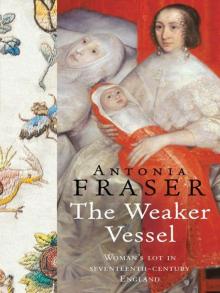 The Weaker Vessel: Women's Lot in Seventeenth-Century England
The Weaker Vessel: Women's Lot in Seventeenth-Century England Marie Antoinette: The Journey
Marie Antoinette: The Journey Oxford Blood
Oxford Blood Your Royal Hostage
Your Royal Hostage Cool Repentance
Cool Repentance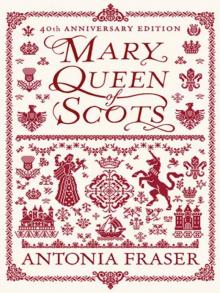 Mary Queen of Scots
Mary Queen of Scots Political Death
Political Death Royal Charles: Charles II and the Restoration
Royal Charles: Charles II and the Restoration My History: A Memoir of Growing Up
My History: A Memoir of Growing Up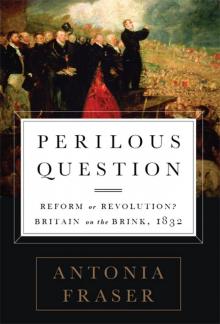 Perilous Question: Reform or Revolution? Britain on the Brink, 1832
Perilous Question: Reform or Revolution? Britain on the Brink, 1832 Jemima Shore at the Sunny Grave
Jemima Shore at the Sunny Grave A Splash of Red
A Splash of Red Must You Go?: My Life With Harold Pinter
Must You Go?: My Life With Harold Pinter Love and Louis XIV: The Women in the Life of the Sun King
Love and Louis XIV: The Women in the Life of the Sun King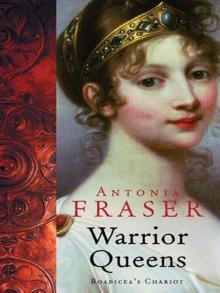 The Warrior Queens
The Warrior Queens The Wild Island
The Wild Island Quiet as a Nun
Quiet as a Nun Perilous Question
Perilous Question Cromwell, the Lord Protector
Cromwell, the Lord Protector Gunpowder Plots
Gunpowder Plots The Wild Island - Jemima Shore 02
The Wild Island - Jemima Shore 02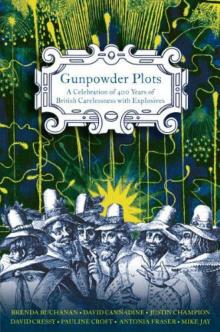 Gunpowder Plots: A Celebration of 400 Years of Bonfire Night
Gunpowder Plots: A Celebration of 400 Years of Bonfire Night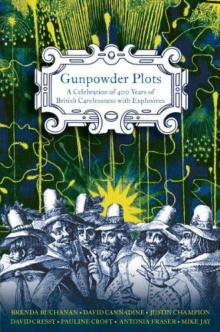 Gunpowder Plots_A Celebration of 400 Years of Bonfire Night
Gunpowder Plots_A Celebration of 400 Years of Bonfire Night Marie Antoinette
Marie Antoinette Must You Go?
Must You Go? My History
My History